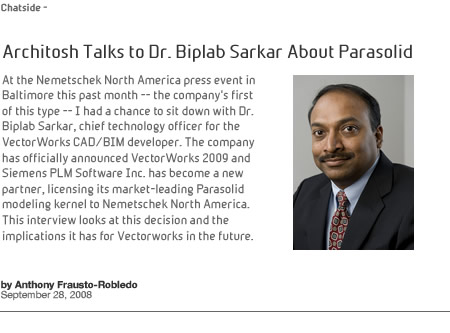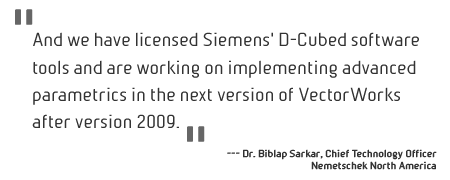|

continued
from page 1 <
BS:
With Parasolid powering Vectorworks we could.
Whether we do that I don't know.
AFR:
What about advanced architectural modeling? Will
you take Vectorworks and make it compete against
those advanced architectural modelers where the
cutting edge is taking place, like formZ and in
particular Rhino?
BS:
Yes. In many ways I think we compete very well
already with either of these products.

AFR:
There are over 700 underlying geometry functions
in the Parasolid kernel. What are you goals going
forward to tap this vast array of power?
BS:
Our first goal is to get all the architectural
modeling components in Vectorworks based
on Parasolid.
AFR:
What percentage of 3D components or elements today
with Vectorworks 2009 are Parasolid-based and what
are they?
BS:
At least 40 percent. Walls and all miscellaneous
3d objects are all Parasolid derived objects.
Roofs and floors are the major architectural
objects that are not yet Parasolid derived.
AFR:
What is your next goal?
BS:
To start tapping those hundreds of advanced
modeling features available from the Parasolid
kernel.
AFR:
What about advanced "parametrics"?
BS:
That too is a part of our next top goals.
And we have licensed
Siemens' D-Cubed
software tools and are working on implementing
advanced parametrics in the next version
of Vectorworks after version 2009.
AFR:
Are the D-Cubed tools Mac-compatible today?
BS:
Yes.
AFR:
Does the Siemens "Synchronous Technology" come
with the Parasolid kernel or is that an overlay
of technology proprietary to Siemens?
pages:
| 1 | 2 | 3 |
Reader Feedback: Talk to us:
|






![]()
![]()